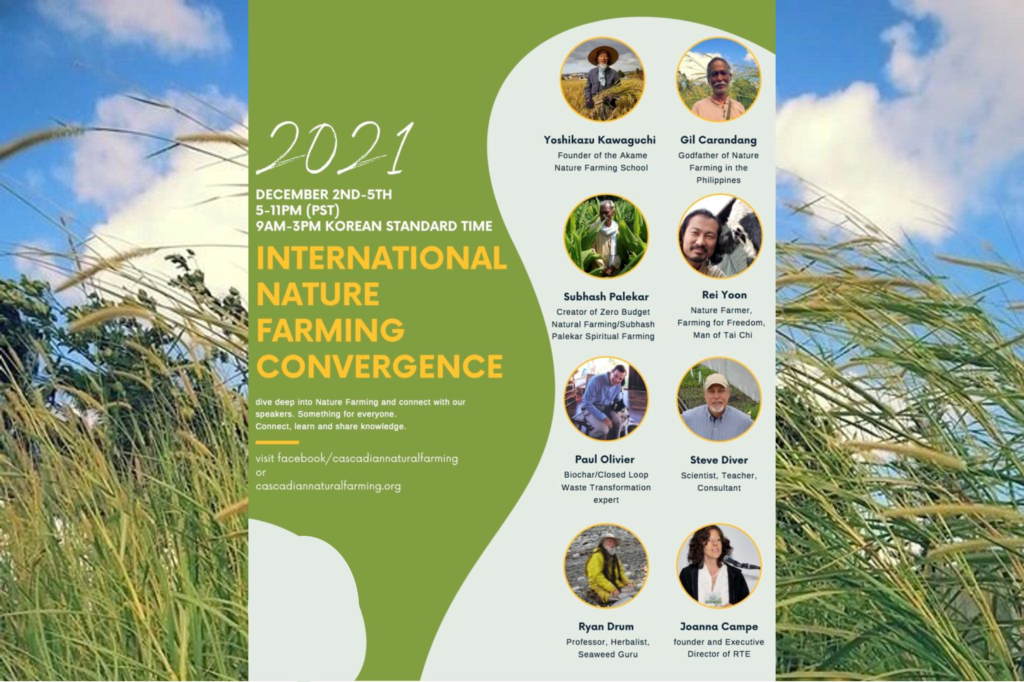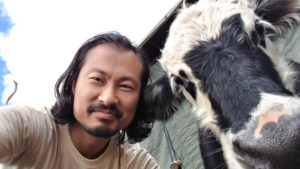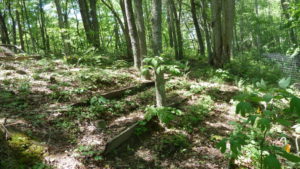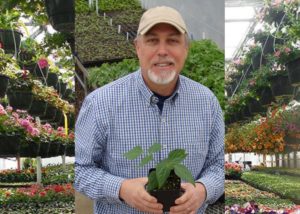Powering Food Sovereignty with Microbes: The Nature Farming Convergence
.
Key takeaways from the 2021 International Nature Farming Convergence
What does a jungle that produces vegetables with rock dust and a weed-laden garden have in common? They both host a vast world of microbes that can save humanity from itself. With the secret to food sovereignty lying right underneath our feet, agriculturalists need to get out of the clouds of technology and back into the dirt to unearth its potential.
In the past 20 years, the agricultural industry has created a rich and costly market of garden tech meant to fix any problem encountered in the field. Too many aphids? Get a pesticide drone. Yield not high enough? Use genetic engineering. Though farming is technically process-efficient today, something integral gets lost in miles of monocrops managed by machines and chemicals: a rich soil biome teeming with microbes.
Across a third of the world’s soils, nutrition in the form of minerals and microbes is moderately to severely depleted. The planet’s ability to filter and store the world’s carbon while also feeding growing populations is threatened by modern farming practices. And the only way to change course is to reconnect with the way the world grew food before major agricultural interference. This is where natural farming steps in to bring philosophy and science together to strike a balance that feeds both nature and humans alike.
Break
A Remineralized Revolution
“Do-nothing agriculture” may sound radical, but according to speakers at the 2021 International Nature Farming Convergence, that’s the point. In the world of natural farming, healthy soil emerges from processes that require less input over time. In other words, the need to add compost, fertilizer, or microbes to crops decreases as the soil regains its vitality. Some of these processes take inspiration from Native American stewards of the ancient past who used remineralization and fire mimicry to manage forests and crops long before Europeans colonized the “New World,” as mentioned in Joanna Campe’s presentation on remineralization and agroforestry. This further underscores the revolutionary benefits of rock dust for climate change and farming.
While some of natural farming’s most effective methods are based on ancient techniques, farmers aren’t asked to live in a past where lab-based research isn’t part of fieldwork. Instead, they are invited to step into a future where farming looks more like nature. This means letting chickens hang out in pigsties to help process pig droppings that increase beneficial indigenous microbiological activity, as illustrated by John Mwangi Ndungu. He reported that pigs raised in his inoculated litter produce sweeter tasting pork. Natural farming can also translate into food forests where crops exist in the tangle of a larger living ecosystem that it becomes a part of.
“We think the farm is separate from the forest…but actually it is the forest that is saving the farm,” environmentalist Rei Yoon explained during his presentation at the virtual conference. Yoon, who was part of a forum of 12 farmers and microbiologists from around the world, has seen in practice how forest soil is kept fertile through natural interactions between leaf litter and microbes. Letting things get intentionally wild in natural farming grows heartier crops and tastier meat without the challenges seen in organic farming that is still reliant on pesticide use.
Break
Does Natural Mean Organic?
Put simply, a holistic commitment to sustainability draws a line between natural farming and organic farming; this distinction can be seen in five basic principles: No-tillage, fertilizer, chemicals, weeding, or pruning. As a philosophy, natural farming seeks to strike a balance in affordability, sustainability, and practicability to return nature’s vibrance. It seeks to become an antidote to a consumerist mindset that has driven farms out of people’s backyards and into the hands of giant agricultural companies, including the ones that follow USDA’s organic guidelines. In practice, natural farming creates soil that can do anything from fighting desertification to growing bigger, more nutritious produce.
“Farmers are just blown away at how well they can grow crops by mimicking nature,” Steve Diver, a noted micro-biome obsessed horticulturist, shared excitedly during his presentation.
All this, plus carbon sequestration, creates a climate-stabilizing triad where carbon, minerals, and microbes work synergistically to combat some of the biggest crises of modern life. And it won’t require us to get used to smaller yields.
Break
Rock Dust Unlocks Microbe Magic
For proponents of this “less is more” type of farming, what you keep out of the ground is just as important as what you put in. When natural farmers use a combination of microorganism-packed inoculants and rock dust in soil exposed to forest it creates the perfect setting for microbial activity.
“Rock dust is food for microorganisms,” explained Diver. So are bones, biochar, and poop. These organic materials create a type of microbial diversity that improves soil structure, leading to better fertility, natural suppression of soil diseases, and an enhanced ability to suck airborne carbon back into the ground.
A large-scale study, highlighted in Campe’s talk on remineralization, brought scientists and indigenous tribes together to find out what would happen if you spread tons of pulverized rock across more than 100 acres of farmland in California and New York. Early results show crop yields increased by 10 to 29 percent. The project’s lead researcher, Ben Houlton, estimates that four billion tons of CO2 could be removed from the atmosphere if rock dust was applied on a global scale.
Break
The Gut, Soil Health Connection
The best probiotics naturally occur in the food we eat, but what happens if the food we eat is grown in unhealthy soil? Microbe-depleted soil creates less nutritious food which negatively impacts the gut’s microbiome. When this happens, the result is manure that is also depleted of soil-boosting nutrients.
Healing this loop begins with diversifying soil microbes with natural farming methods that grow more nutritious food. When humans and animals eat these nutrient-dense foods, it heals gut microbiomes and creates bio-active manure that eventually goes back into the soil to start the process all over again. This gut to soil pipeline creates “a vast micro-universe that supports all life,” according to Diver. One that overlaps with our ability to combat climate change and feed ever-growing populations.
The principle of healing humans and the lands are one and the same. As Ndungu put it during the forum, “everything we need, we have right here in the soil.”
Break
Shenise Ramirez is a multimedia journalist, environmental sci-fi writer, and educator with a soft spot for agroecology. They have backpacked from newsrooms to mountains for the past seven years, producing content for platforms like iHeartRadio, FiOS1 News, Business Insider, and UrbanOne. As a science writer and social media editor for RTE, they use multimedia storytelling to translate research into stories that bring readers behind the scenes of groundbreaking science. They believe intersectional journalism creates fertile ground for past transgressions to grow into an environmentally just future.
Support us on Patreon
Thank you for joining us today! Please become a member of RTE and support us on Patreon. Unlike many larger organizations, we work with a team of determined and passionate volunteers to get our message out. We aim to continue to increase the awareness of remineralization to initiate projects across the globe that remineralize soils, grow nutrient dense food, regenerate our forests’ and stabilize the climate – with your help! If you can, please support us on a monthly basis from just $2, rest assured that you are making a big impact every single month in support of our mission. Thank you!












Got something to say?